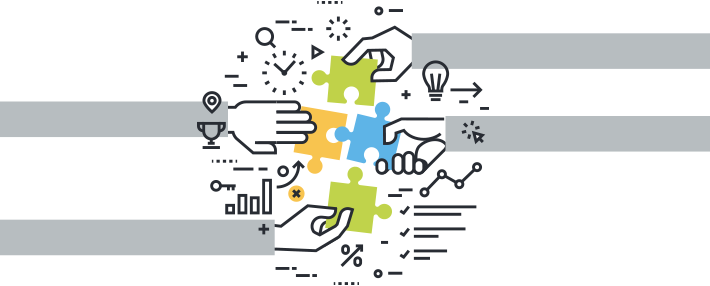%20for%20Web%20Writing.png?width=710&name=Basic%20Search%20Engine%20Optimization%20(SEO)%20for%20Web%20Writing.png)
With everything having a website these days, how do you make your church’s website stand out in a Google search?
An essential thing to implement on your church’s website is SEO (search engine optimization). SEO is how we make things show up in search results. Without SEO, no one knows your site exists unless they already have its URL.
One could easily write an entire book on how to optimize a site for SEO, but here are some basic tips to get you started. Because your site will have a mix of long-term pages that aren’t frequently updated and timely pages you need to draw traffic to, you may not use all of these tactics on every single page. But implementing them when appropriate will make a big difference in helping new people find your site and get connected to your church.
Keywords
If there’s anything you take away from this post, it’s to focus on one keyword or key phrase on each page in your site.
In the past, we had to throw as many keywords as possible into a page to make sure it came up in search results. (This is called keyword stuffing.) Nowadays, Google penalizes sites that do that and ranks pages higher when they focus on one keyword. So rather than using the same keyword multiple times, you can use alternative phrases; Google’s algorithm can understand that these are related to your main keyword.
For instance, if you have a page describing how your pastors conduct visits to people who are homebound, you may want your main keyword to be “pastoral visits” or your main key phrase to be “pastoral visits in Cincinnati” (or wherever your church is located).
It’s essential to do keyword research before you begin writing so you can determine what people are looking for and which keywords will perform the best. You can use resources like Google Keyword Planner and Soovle to find keywords and alternatives. This research can even help you find new ideas for future topics to write about.
Page Titles and Meta Descriptions
In the screenshot below, the page title is the blue text in the search result. The meta description is the grey text underneath that.

The page title is also the text that shows up in a tab at the top of the browser. Google displays page titles up to 512 pixels in length, which is around 50 to 60 characters, including spaces. If it’s longer than 60 characters, the end may get cut off in search results. Google’s algorithm looks at page titles to determine search results, so your main keyword should appear in the page title.
Meta descriptions need to be under 160 characters including spaces, otherwise they will get cut off. Google no longer uses meta descriptions to pull pages for search results, so don’t worry about including the main keyword here. Rather, just write a short description that explains what the user will find on the page, entices them to click to read it, and shows that what’s on the page is relevant to their search.
Headings and Body Text
It’s a best practice to break up your page with headings to help readers skim. People use the internet very differently from how they use textbooks or academic essays—so on the internet, no one wants to read a large block of text. Headings also affect SEO.
Each page should only have one H1, which is the largest heading and should generally indicate to users what is on the page. Use a limited number of H2s.
It also benefits SEO to have the main keyword in at least one heading. But remember that even though you are keeping Google in mind when you write copy for your website, the user should be the top of mind at all times.
In the body copy, avoid keyword stuffing. Make sure to use the main keyword once in the body copy, and after that, just write naturally.
Links
There are two types of links: inbound links and outbound links.
Inbound links are links on other websites that point to your site. Inbound links can greatly boost your SEO depending on the trustworthiness and relevance of the site linking to yours. But unfortunately, you can’t really control these links. Outbound links are links on your website that point to other sites. You do have control over these. Outbound links can direct readers toward other helpful content, but avoid getting too link-happy. Google penalizes sites that spam readers with too many links that aren’t relevant to them.
There isn’t a set number of outbound links you should include, but here’s something that can help weed out unnecessary links: Only include links to specific resources that are difficult for readers to find on their own. For example, if you’re referencing a news story on NPR’s website, link to the specific article rather than to NPR’s homepage.
Another SEO booster is to use keywords in linked text and buttons. Here’s an example for linking to a free downloadable Bible study for families.
- In-text link: In the phrase “Download the free family Bible study,” link the words “free family Bible study” rather than “download.”
- Button: The button text should read “Download Bible Study” rather than just “Download.”
Using keywords in links helps explain the links to skimmers who don’t read the entire post. It also helps differentiate links and buttons from one another if there are several on the page.
Images
There are two important elements to keep in mind with optimizing images for SEO: file names and alt text.
Change the file name for each image to specify what the image shows rather than leaving the name as whatever jargon your phone or computer creates. A best practice for naming files is to lowercase all letters and to use dashes instead of spaces. These help Google read image names more clearly.
Alt text stands for “alternative text.” This is what is read by screen-readers for the visually impaired and what is displayed when the image doesn’t load. Try to include your main keyword in the alt text of one image, but to avoid keyword stuffing, don’t cram it into the alt text of every image on the page.
For example, if you’re including a picture of volunteers sorting canned goods for a food pantry, you might use the file name “volunteers-sorting-canned-goods.jpg” and have the alt text be, “Volunteers at Christ Lutheran sorting canned goods for City Food Pantry.”
Implementing SEO on your site may feel like a daunting task, but once you start integrating it into your communication strategy, it will start to feel natural. Keep in mind that Google’s algorithms are constantly changing, so as time goes on, it will be important to adjust your site to keep it up to date.
Download a free SEO checklist you can tape to your computer monitor.
Use this checklist to make sure you’ve hit all the important marks on your new website pages. SEO will make a big difference in helping new people find your site and get connected to your church!







